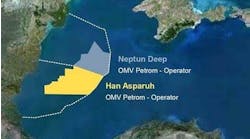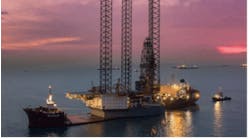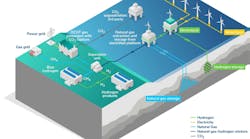In years past, the US Gulf of Mexico was the dominant offshore drilling market, historically absorbing about a third of the global supply of offshore equipment and services.
With the resurgence of drilling activity to meet the world’s growing appetite for hydrocarbons, the center of the drilling universe has shifted to more prolific oil and gas regions. The pendulum has swung from West to East.
By way of example, the US Gulf is no longer the No. 1 jackup market. That distinction now rests with the Middle East.
The migration of jackup rigs to more prolific oil and gas provinces is in part due to the emergence of the national oil companies (NOCs).
NOCs are the world’s top 10 reserve holders and comprise four of the top five operators of offshore rigs. Their impact on rig markets is likely to be felt for some time, as it will take significant time and capital to reverse production declines on many giant fields and to also keep pace with the world’s growing energy requirements.
As drilling activity has shifted internationally, it has led to a significant migration of drilling rigs out of more mature provinces like the US Gulf. Since 2000, a total of 89 jackup rigs have departed the US Gulf, offset only partially by the entry of some 34 rigs from overseas markets. Most of these rigs have departed for term work opportunities in the international markets.
The net departure of 55 Gulf rigs only tells part of the story. Close to 90% of the net departures have been premium jackups (49 rigs), that is rigs rated for at least 250 ft water depth. The profile of the Gulf fleet today is much different from the profile in 2000, both in terms of size and capability.
In the Gulf today, there are currently only 14 rigs capable of drilling in 350 ft or greater water depths and six capable of drilling in water depths of 400 ft or more. Contrast this with the 33 high-end rigs that were in the GoM in December of 2000. This degradation of fleet capability comes at a time when drilling applications in terms of well depths and pressure are becoming more rigorous.
It appears that there will continue to be pressure on supply. It is anticipated that another five to 10 jackups may depart the US Gulf over the next year. While the GoM is close in proximity for the 11 jackups now under construction on the Gulf Coast, most of these rigs are being marketed outside of the Gulf, where day rates and terms are more lucrative.
The decrease in the Gulf rig supply has been overshadowed by an even more rapid decline in rig demand. A shift in spending to international markets, the continued slow recovery from the 2005 hurricanes as infrastructure is rebuilt, and the volatility of natural gas prices have contributed to this falloff in activity.
Currently, GoM jackup demand is 63 rigs. To find a comparably low level of activity in the Gulf, one must go back to 1992, when natural gas prices were approximately a quarter of what they are today.
In fact, prior to hurricanes Katrina and Rita in 2005, GoM jackup demand ranged between 80 and 90 rigs for the 2003 to 2005 period leading up to the storms. Any recovery in jackup demand in the face of diminishing rig supply will be felt in the market.
With the short-term nature of the GoM jackup market, visibility is limited, and it is difficult to predict when the market may return to balance. What is clear is that the US GoM jackup market is no longer the dominant market, now displaced by the Middle East as the world’s most active jackup region.
Nevertheless, the US Gulf will continue to be an important market and one that must be counted on to make a meaningful contribution to future US natural gas supply.
Daniel W. Rabun
President and CEO, Ensco International Inc.
This page reflects viewpoints on the political, economic, cultural, technological, and environmental issues that shape the future of the petroleum industry. Offshore Magazine invites you to share your thoughts. Email your Beyond the Horizon manuscript to Eldon Ball at[email protected].


